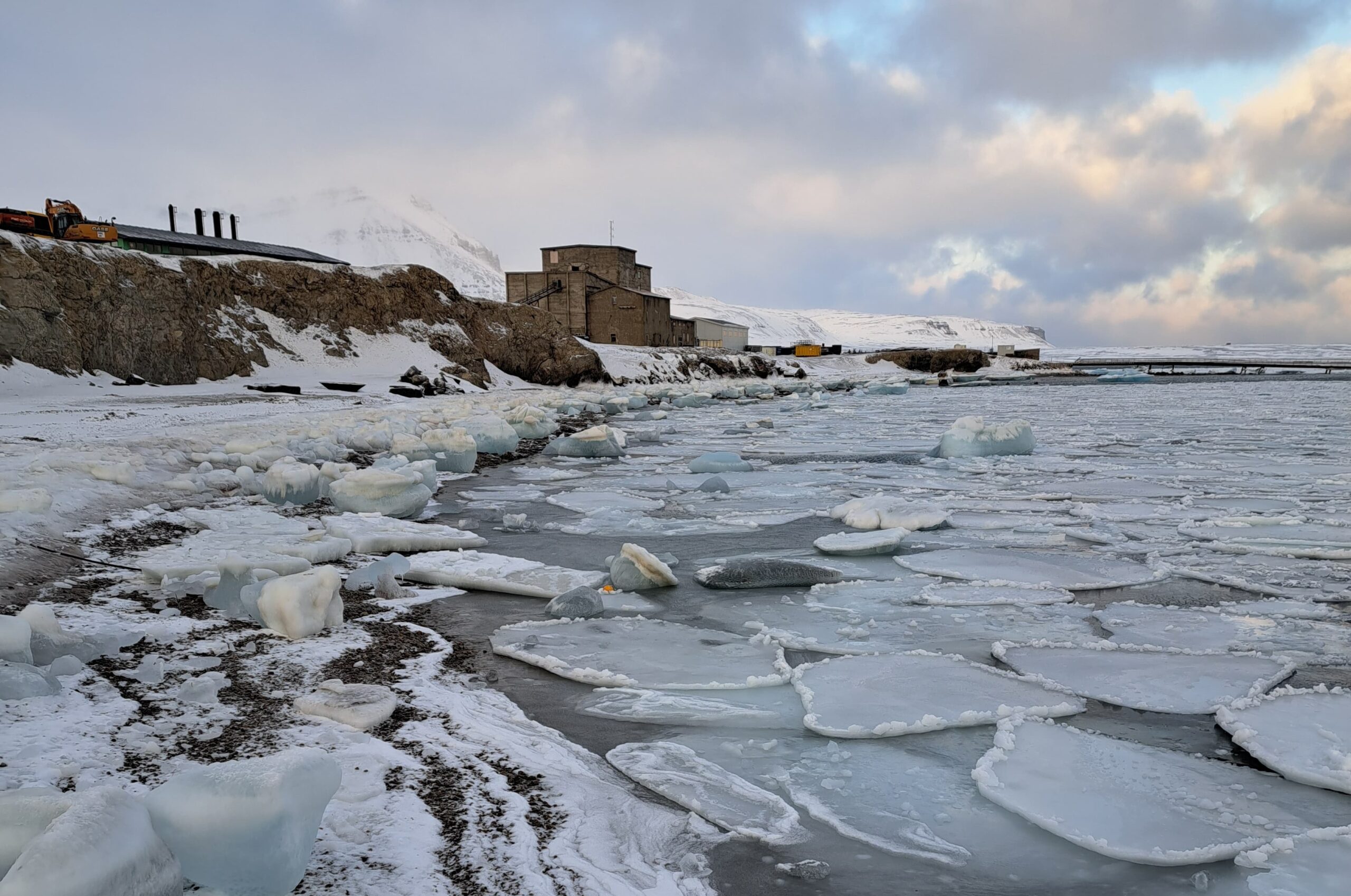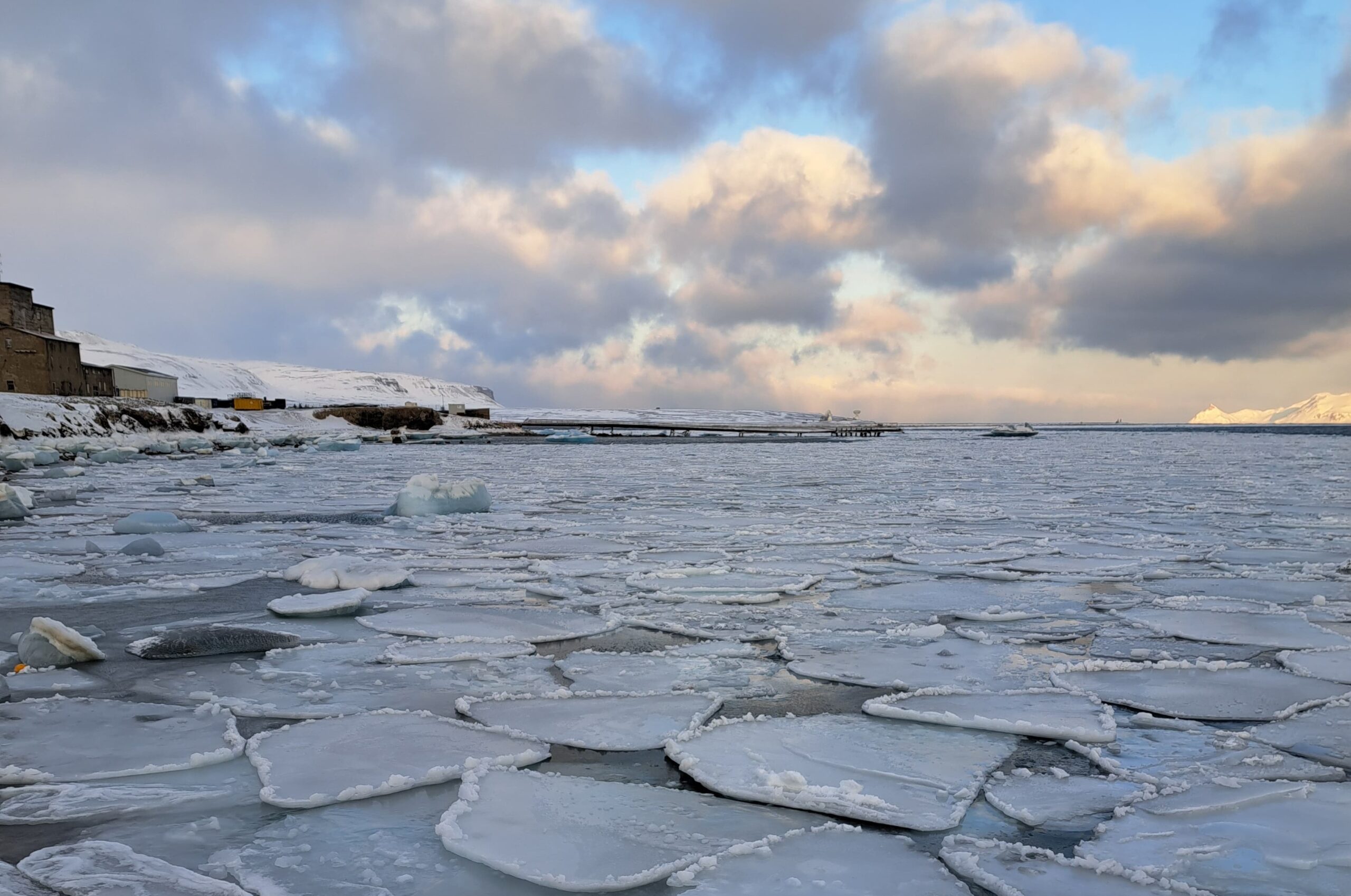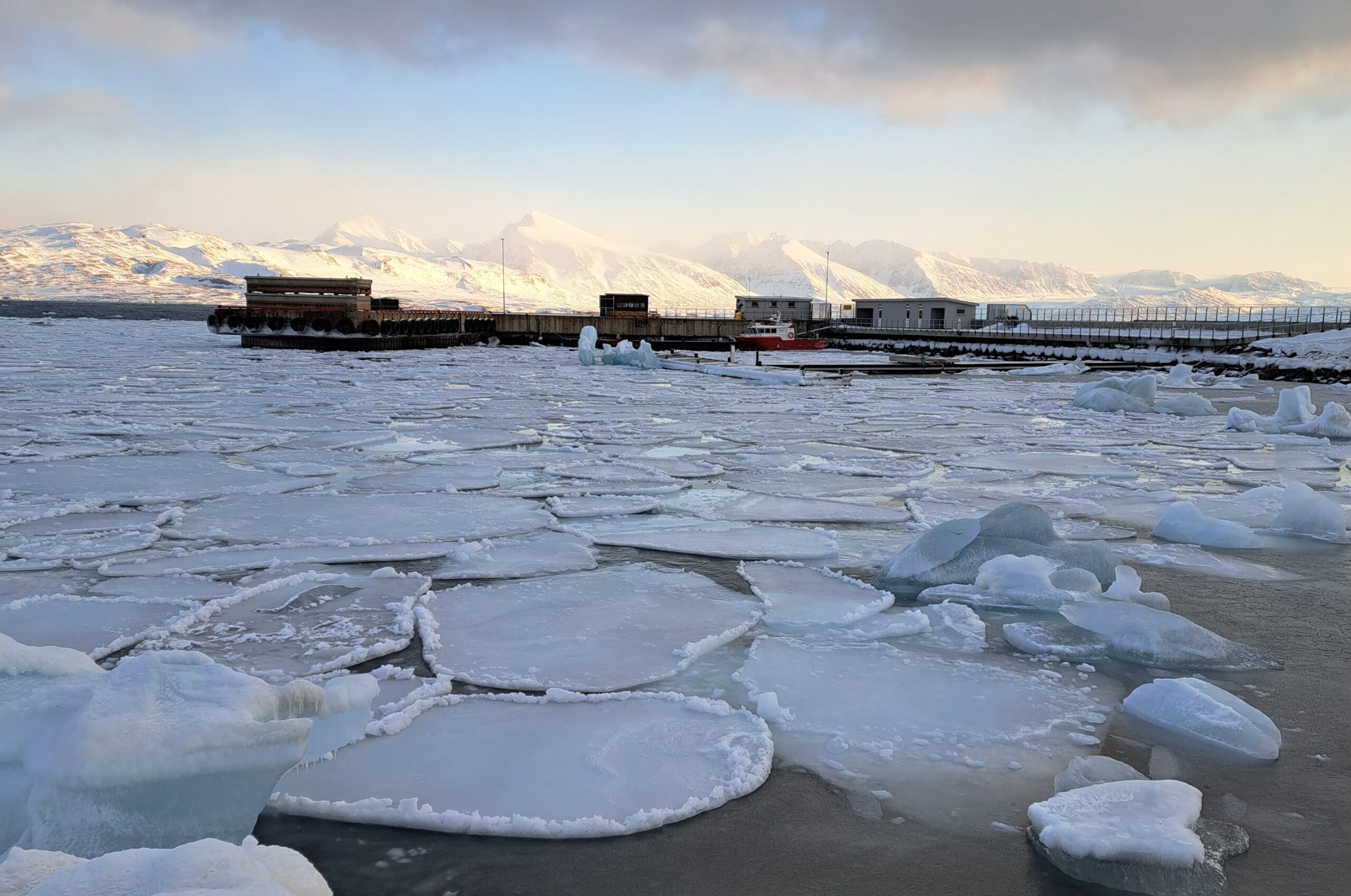APRIL 8
SCIENTIFIC WORKS
The implications of pancake ice in Svalbard
In Ny-Ålesund, complete fjord freeze-overs have become a rare sight due to rising temperatures and changing ocean dynamics. At the moment we can, however, see the phenomenon of pancake ice in the harbour – flat, circular ice pieces floating in the water caused by ice chunks colliding as they freeze and grow. Though they are captivating visually, this change carries significant implications for the Arctic ecosystem. We asked our scientists what it means for the organisms they study.
Milan Beck, our PhD student focusing on algae, states that ice tension creates mechanical disturbances to the upper intertidal zone. This impacts macroalgal communities, for example Fucus distichus. Quicker ice melting and less freeze-overs also change the seasonal light regime for macroalgal beds, providing them with more light earlier in the season and influencing their production.
Our senior researcher Felix Mark says that polar cod depend on sea ice for food, and when they are in the beginning of their lifespan, for shelter as well. The reduction in sea ice impacts their habitat and food sources.
A major change is the availability of light for pelagic phytoplankton, says PhD student Sneha Sivaram. Sea ice limits the amount of photosynthetically active radiation (PAR) reaching the water column. Its absence seriously increases light penetration, which may lead to earlier and more intense phytoplankton blooms. This has cascading effects on carbon sequestration and the biogeochemical regulation of the fjord, since phytoplankton is eaten by larger animals. If there are changes, they could affect when these animals feed during the seasons. Also, sea ice influences the type of phytoplankton found in the fjord, as some phytoplankton seem to only live in or under the ice. The different species of phytoplankton can significantly impact the rest of the ecosystem feeding on them.
Incomplete fjord freeze-overs are a localized manifestation of global warming. Rising temperatures are also driving glacial recession described in a recent UN report. The report highlights the severe threat this poses to the food and water security of two billion people worldwide, and the impact this may have on global agriculture and water resources. Read the full report here: https://www.unesco.org/reports/wwdr/en/2025






